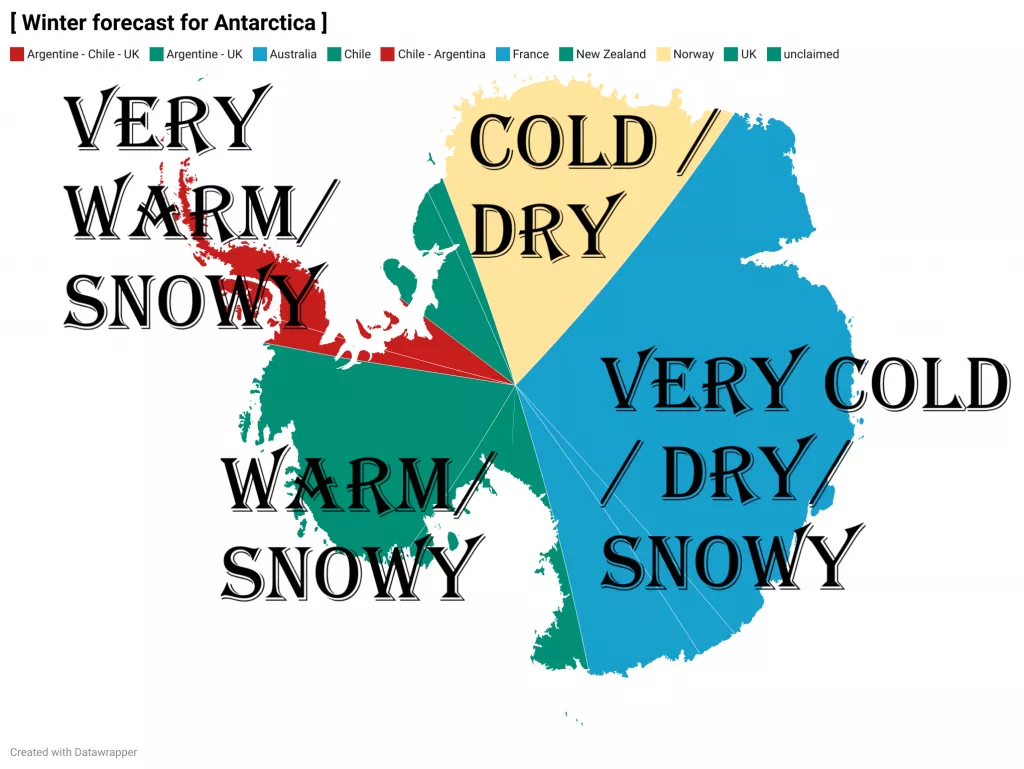
Overview:
Antarctica’s winter (June to August 2025) climate will be influenced by large-scale atmospheric teleconnections and oceanic patterns that modulate temperature, sea ice extent, and atmospheric circulation. The European Centre for Medium-Range Weather Forecasts (ECMWF) seasonal model provides projections indicating variability across different Antarctic sectors, driven primarily by the Southern Annular Mode (SAM), El Niño–Southern Oscillation (ENSO), and other coupled climate oscillations.
Temperature and Atmospheric Circulation
- Temperature Outlook:
ECMWF seasonal forecasts project near-average to slightly below-average temperatures over most of East Antarctica, particularly the high interior plateau regions (e.g., Dome A, Vostok). This cooling tendency is associated with a positive phase of the Southern Annular Mode (SAM), which strengthens the circumpolar westerly winds, effectively isolating the continent and allowing colder air to persist over the interior. - West Antarctica and the Antarctic Peninsula show more variability, with models suggesting near-average temperatures or a slight warming tendency, especially along the peninsula’s northern tip. This region is strongly affected by teleconnections linked to the tropics, especially ENSO and the Pacific Decadal Oscillation (PDO). A weak to moderate La Niña phase is forecast for 2025, which historically correlates with cooler and drier conditions in the Antarctic Peninsula region, but ECMWF suggests potential episodic warm intrusions due to transient atmospheric blocking patterns.
- Atmospheric Circulation:
The SAM is forecast to remain predominantly positive through winter, reinforcing strong westerly winds around Antarctica. This intensification reduces the encroachment of warmer mid-latitude air onto the continent, maintaining cold interior conditions. However, variability in the SAM, coupled with fluctuations in ENSO, may trigger episodic intrusions of warm, moist air, especially along the Antarctic Peninsula, driving short-term warming and increased snowfall.
Sea Ice and Precipitation
- Sea Ice Extent:
ECMWF models and observational analogues indicate a near-average to slightly above-average sea ice extent for the 2025 winter season, especially in the Ross Sea and Weddell Sea sectors. The positive SAM phase favors stronger westerly winds that promote sea ice expansion in some regions while suppressing it in others. Overall, sea ice growth is expected to be stable, but with regional variations:- The Ross Sea sector likely sees robust sea ice growth, consistent with past positive SAM winters.
- The Amundsen-Bellingshausen Seas may experience slightly reduced sea ice extent due to occasional warm air intrusions.
- Precipitation:
Winter is typically dry over Antarctica, but the forecast suggests slightly increased snowfall along the Antarctic Peninsula and coastal West Antarctica, linked to transient warm air intrusions and increased moisture transport during episodic cyclonic events. The interior remains very dry, with minimal precipitation changes expected.
Teleconnections Impact
- Southern Annular Mode (SAM):
The dominant driver for Antarctic winter conditions, SAM is expected to remain positive, strengthening the polar vortex and reinforcing cold interior conditions and sea ice expansion. Positive SAM also steers storms along the circumpolar path, impacting coastal precipitation patterns. - El Niño–Southern Oscillation (ENSO):
A weak to moderate La Niña is anticipated in 2025, favoring cooler conditions in the Antarctic Peninsula region but potentially enhancing storm activity along West Antarctica’s coast. La Niña can also slightly increase sea ice extent in the Ross Sea sector. - Pacific Decadal Oscillation (PDO):
Currently in a negative phase, the PDO supports La Niña impacts and modulates atmospheric circulation patterns that influence temperature and sea ice distribution around Antarctica.
Summary
Antarctica’s winter 2025 will be marked by:
- Cold interior temperatures reinforced by a positive SAM phase.
- Variable West Antarctica and Peninsula temperatures influenced by La Niña and transient atmospheric blocking, leading to episodic warming events.
- Stable to slightly increased sea ice extent overall, with regional variations.
- Slightly increased coastal snowfall, particularly along the Antarctic Peninsula.
These conditions reflect complex interactions among the SAM, ENSO, PDO, and local atmospheric dynamics, as projected by the ECMWF seasonal model.

Simple Winter 2025 forecast for Antarctica

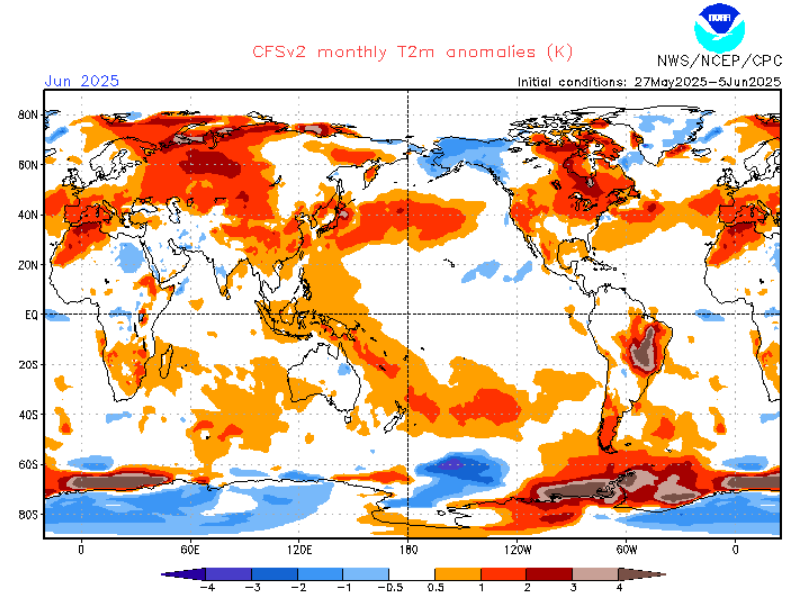
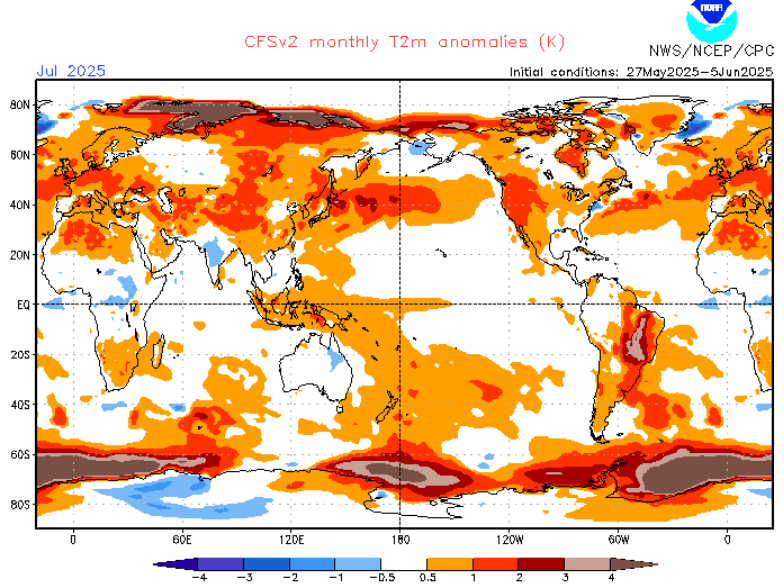
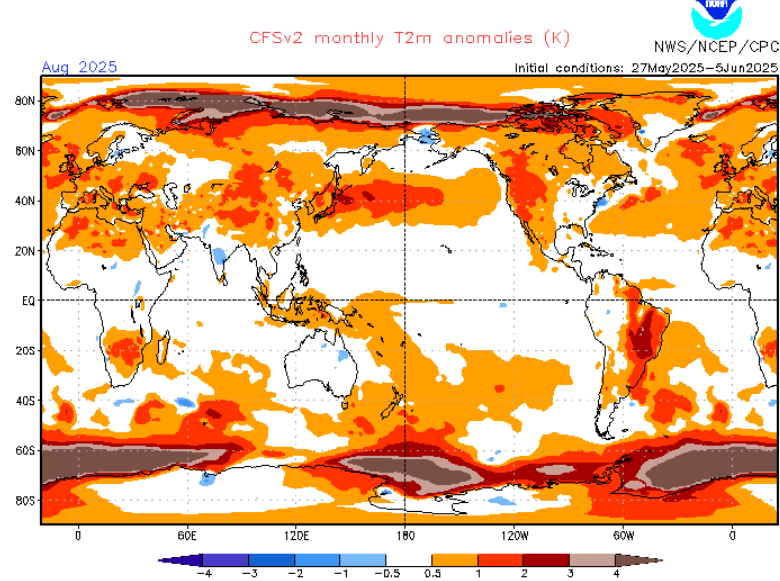
Temperature anomalies for JJA 2025. Source: https://www.cpc.ncep.noaa.gov/products/CFSv2/CFSv2_body.html
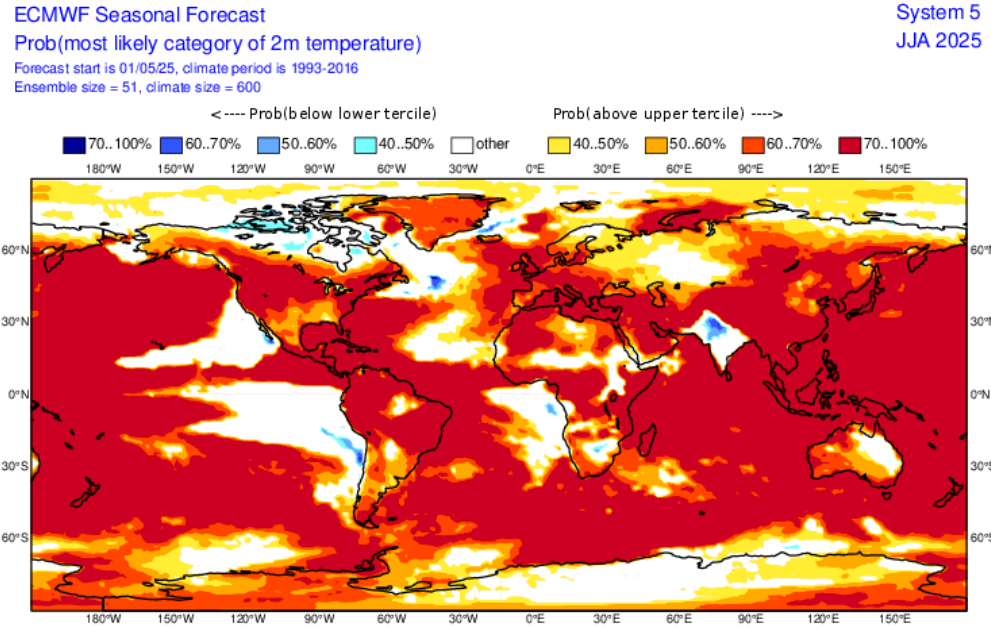
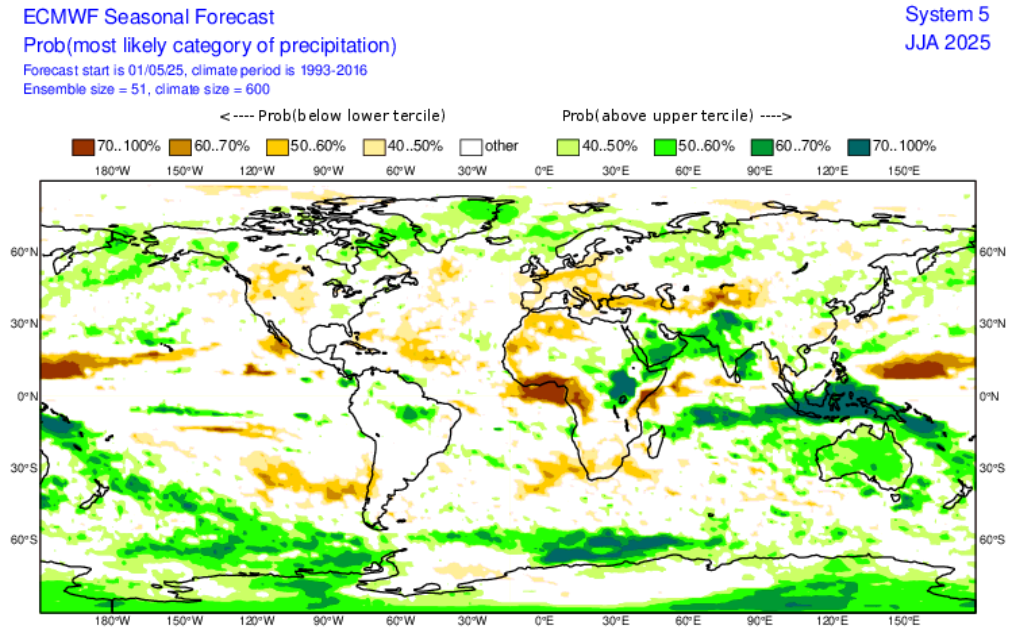
Temperature and precipitation outlook for Summer 2025 in Asia from ECMWF. Source: https://charts.ecmwf.int/



























